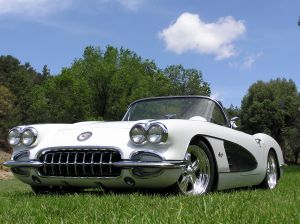1937 Bugatti Type 57S – $4.4 million
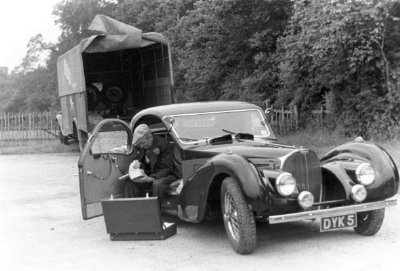
This 1937 Bugatti Type 57S Atalante was originally purchased by Earl Howe a month after it left the Bugatti works. Over the 8 years that he owned the car, Howe added new bumpers, a luggage rack and rearview mirrors. It was later brought up to SC specification with the addition of a Marshall K200 supercharger by its next owner, J P Tingay. Eventually, the car found its way into the hands of Lord Ridley, who held it for a year before selling it to Dr. Carr. Combine this pedigree with the fact that only seventeen Type 57S’s—a version of the Type 57 modified specifically for competitions—were produced and you have quite an expensive car.
007 Aston Martin DB5 – $5-$10 million
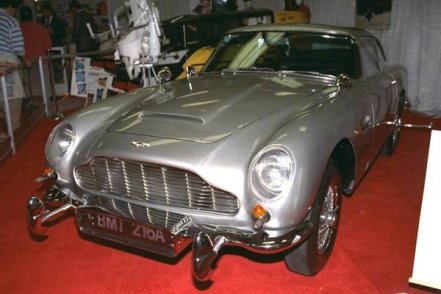
Radio broadcaster Jerry Lee originally purchased the car from Aston Martin in 1969 for $12,000, after the car had appeared in both “Goldfinger” and “Thunderball” and had toured in a 007 promotional campaign. He has entered the car in “Automobiles of London,” where it will be auctioned on October 27th, 2010.
The other DB5 is believed to have been destroyed after its reported theft in 1997.
Aside from the (non-functional) machineguns, the car also features an ejector seat (also non-functional) and revolving number plates. These and other factory-installed gadgets are all in working order after a recomissioning program by RM Auto Restoration.
This spectacular piece of film and automotive history is expected to fetch between $5 and $10 million.
1961 Ferrari 250 GT California Spyder – $10.8 million
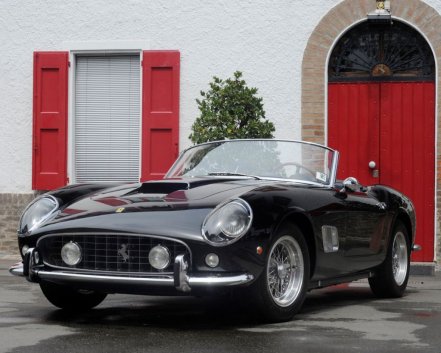
1957 Ferrari 250 Testa Rossa – $12.4 million
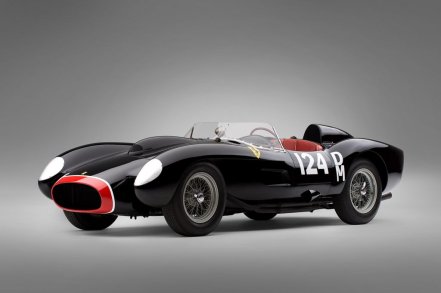
This particular TR won 4th place when driven by Piero Drogo in the 1000 km Buenos Aires in January of 1958. Drogo drove it one more time, in the Grand Prix of Cuba, before he sold it to American Alan Connell who drove it in nine races and spent most of that time in 1st or 2nd place in class. It featured in twelve more races between 1960 and 1963, making it one of the most raced Ferraris of all time.
It was sold at auction in Maranello, home of Carrozzeria Scaglietti and birthplace of the TR, for an impressive sum of €9,020,000.
1934 “Star of India” Rolls-Royce Phantom II Continental – $13 million

This bespoke Rolls was one of 281 Continental Phantom II’s ever produced. Built for the Maharajah of Rajkot, one of its custom features is, among its 14 headlights, a pair that turns with the steering wheel. Also particular to the Star of India is its unique orange-over-aluminum color combination.
The Star of India was auctioned alongside twenty-four other rare Rolls-Royces and another three Bentleys. After the auction, it appeared for sale at $13 million, but the listing was later removed.
Peter D. Williamson Bugatti Type 57S Atlantic – $30-$40 million
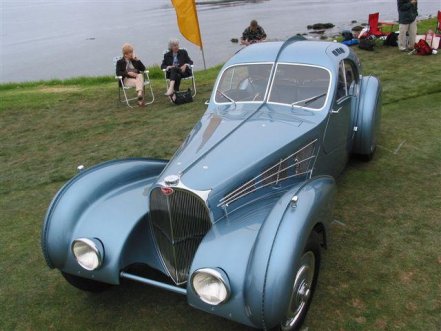
Only four Type 57SC Atlantics were produced and only two have survived to this day. Fashion guru Ralph Lauren owns one while the other was owned by late Bugatti collector Dr. Peter Williamson. The Williamson Bugatti, chassis #57374, was the first Atlantic off the production line and was originally owned by Lord Victor Rothschild. While it was drastically modified by its second owner, Dr. Williamson restored it to its original specifications after acquiring it for $59,000 in 1971. After Williamson’s passing, it was sold to an undisclosed buyer, reportedly for a sum between $30 and $40 million.












